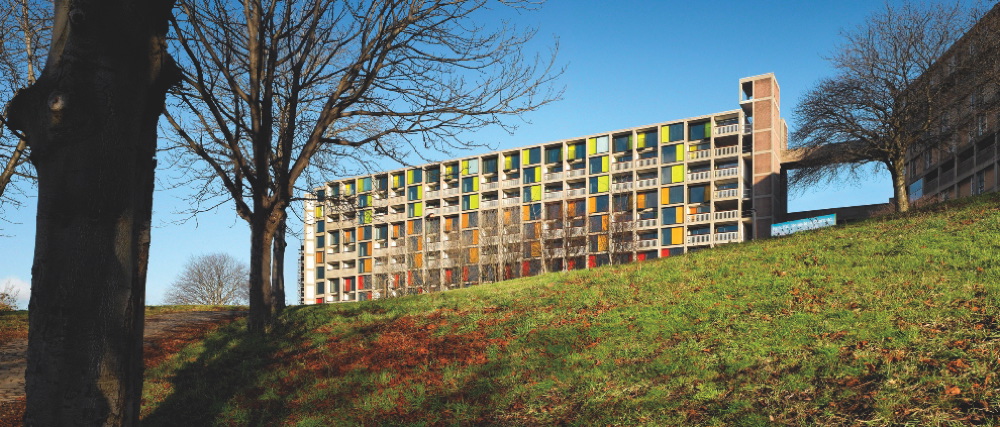All my life, Park Hill flats have dominated the hill above Sheffield Station, appearing brooding, paternalistic or sinister, according to my mood. Recently they opened to the public as part of the National Trust’s Brutalist Architecture series, together with other properties of the same ilk throughout the country.
Most people here either love or hate the flats. Contrarily I do both.
When construction began in 1957, the flats, with their radical Brutalist architecture, were seen as an icon of the emerging, hopeful, post-war utopian world. They replaced the worst back-to-back slum community in Sheffield, which had appalling sanitation and high levels of crime, earning the neighbourhood the nickname Little Chicago. But in the first successful post-war slum clearance in England, the entire community was moved wholesale, with neighbours housed next to neighbours and street names corresponding with ones left behind.
The flats were constructed following the Le Corbusier concept of “streets in the sky”, with indoor corridors – wide enough for a milk float to call at each door – and built on a steep gradient, allowing access to ground level on each floor. There were local shops, a children’s playground, a pub and even a primary school on site. However, the experiment soon floundered and within two generations, coinciding with Sheffield’s demise as Steel City in the 1980s, Park Hill had become a derelict place of drugs, decay and graffiti.
Enter Urban Splash and English Heritage.
Together they were commissioned to regenerate the forlorn estate. Out went the boarded-up front doors, the derelict playground and the rotten curtains hanging out of broken windows. In came re-fashioned interiors, marketed as cool modern living spaces. But for whom, I ask? I live on the other side of town and can see Park Hill from all my top-floor windows. My 1960s three-bedroomed semi with garage and garden cost around £110,000. The cheapest one-bedroom flats on Park Hill sell for just under £100,000. The chic flats are undoubtedly intended for young professionals or well-off students, but the grandchildren of the very people they were built for are now languishing in modern slum private rented accommodation or on the ubiquitous council estates rotting away on the edge of town. For them, sadly, nothing much has changed since the 1980s. Still poorly educated and ill-equipped for the job market they are only able, I surmise, to look with bewildered resentment at the gentrification of Nan’s old flat. For me, the story of Park Hill mirrors that of many northern towns, patronised by the educated elite, forgotten by London and with little sign of the brave new world promised them long ago.
Emma Green is a Sheffield resident
Photo: Park Hill flats
Got an idea for Why Don’t We Just…? Email us now.



Leave a reply
Your email address will not be published.